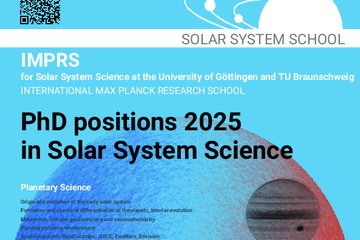All genres
141.
Journal Article
Radar auroral observations and ionospheric electric fields. Advances in Space Research 2, p. 131 (1983)
142.
Journal Article
A test of the cosine relationship using three-radar velocity measurements. Radio Science 18, p. 230 (1983)
143.
Journal Article
Characteristics of eastward drifting omega bands in the morining sector of the auroral oval. Journal Geophysical Research 88, p. 9171 (1983)
144.
Journal Article
Three-dimensional current flow and particle precipitation in a westward travelling surge (observed during the Barivin-GEOS rocket experiment). Journal Geophysical Research 88, p. 3138 (1983)
145.
Journal Article
Ionospheric elctric field pulsation: A comparison between VLF results from an ionospheric heating experiment and STARE. Journal Geophysical Research 88, p. 2140 (1983)
146.
Journal Article
Ionospheric elctric field pulsation: A comparison between ULF results from an ionospheric heating experiment and STARE. Radio Science 88, p. 2140 (1983)
147.
Journal Article
Evidence for the E x B drift of pulsating auroras. Journal Geophysical Research 88, pp. 7983 - 7988 (1983)
148.
Journal Article
Spatial variations of ionospheric conductivity and radar auroral amplitude in the eastward electrojet region during pre-substorm conditions. Journal Geophysical Research 52, p. 40 (1983)
149.
Journal Article
First results of micropulsaiton activity observed by SABRE. Planetary and Space Science 31, p. 573 (1983)
150.
Journal Article
SABRE observations of a sequence of Pc5 micropulsations. Radio Science 18, p. 1133 (1983)
151.
Journal Article
Splitting and divergence of ``STARE'' auroral radar velocities. Journal Geophysical Research 88, p. 2147 (1983)
152.
Journal Article
STARE observations of a Pc5 pulsation with large azimuthal wave number. Journal Geophysical Research 87, p. 6163 (1982)
153.
Journal Article
Experimental evidence on the dependence of 140 MHz radar auroral backscatter characteristics on ionospheric conductivity. Journal Geophysical Research 87, p. 7666 (1982)
154.
Journal Article
Radar auroral observations during a burst of irregular magnetic pulsations. Journal Geophysical Research 87, p. 1541 (1982)
155.
Journal Article
The electron pitch angle distribution at geosynchronous orbit associated spikes during the substorm expansion phase. Journal Geophysical Research 87, p. 887 (1982)
156.
Journal Article
Ps6 spatial and temporal structure from STARE and Riometer observations. Journal Geophysical Research 87, p. 8157 (1982)
157.
Journal Article
STARE observations of long discrete echoes. Nature 299, pp. 238 - 240 (1982)
158.
Journal Article
The interpretation of gound-based observations of energetic electron fluxes modulated by Pc5 hydromagnetic oscillations. Journal Geophysical Research 87, p. 2549 (1982)
159.
Journal Article
The hydromagnetic oscillation of individual shells of the geomagnetic field. Journal Geophysical Research 87, p. 432 (1982)
160.
Journal Article
Field-aligned currents associated with Pc5 pulsaitons:STARE and TRIAD observations. Journal Geophysical Research 87, p. 2331 (1982)











